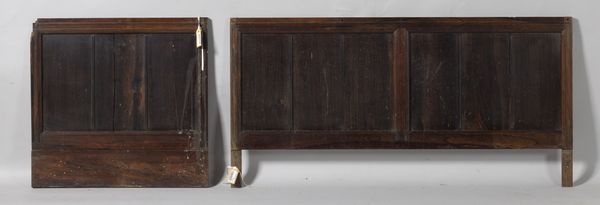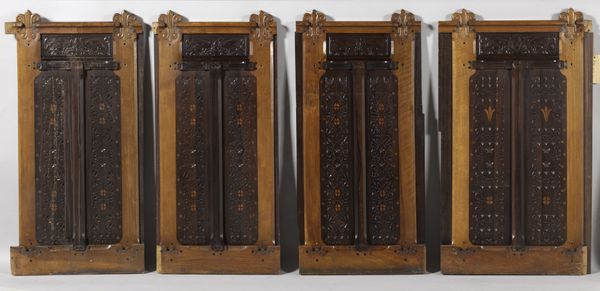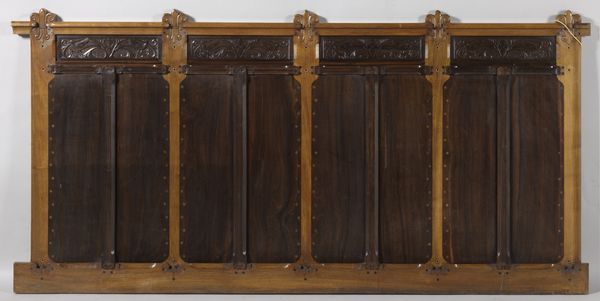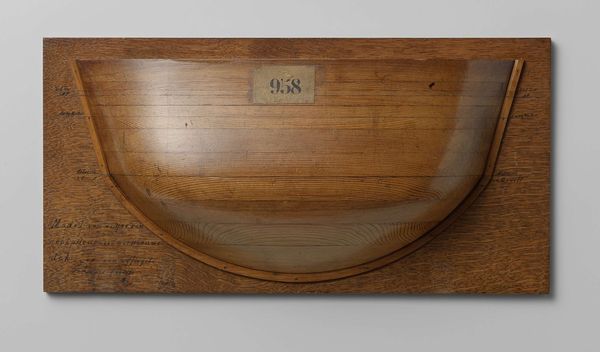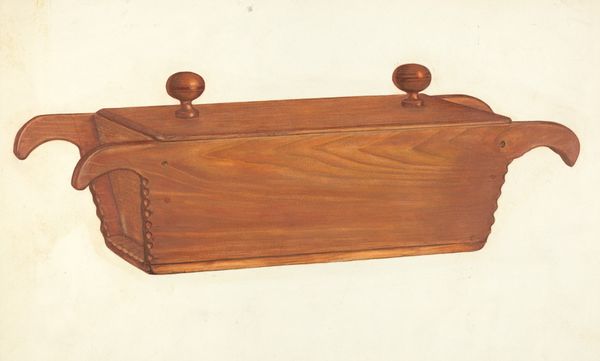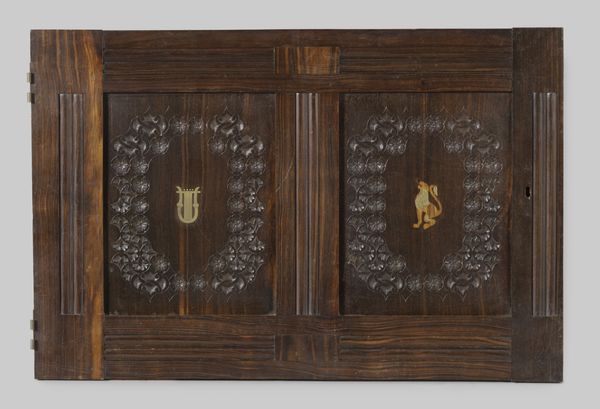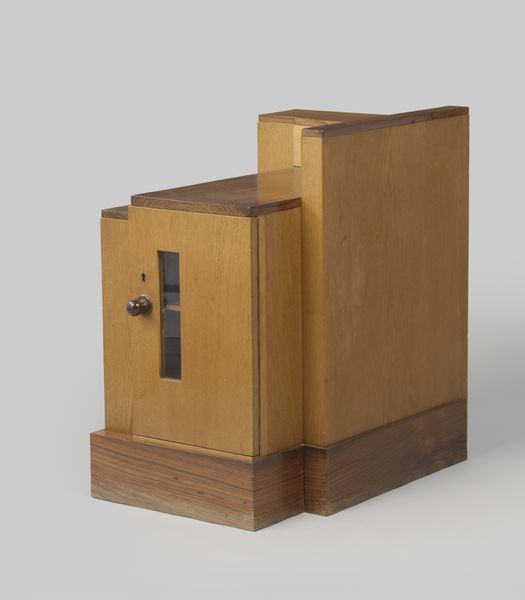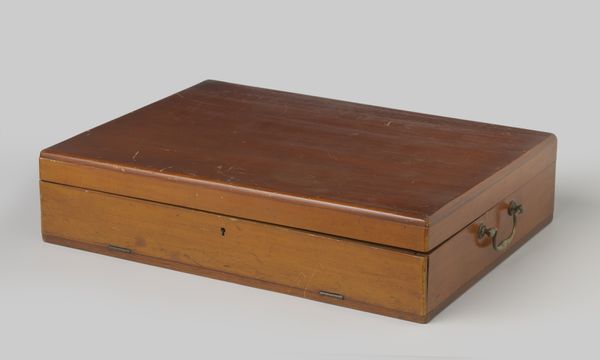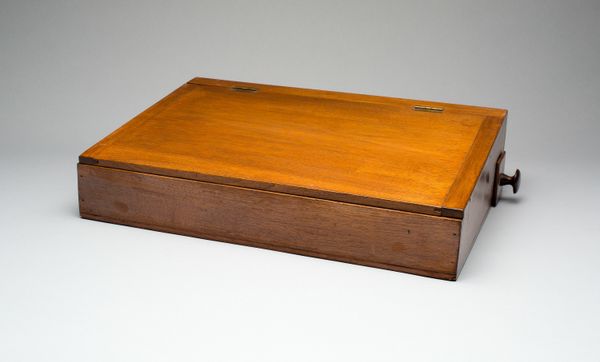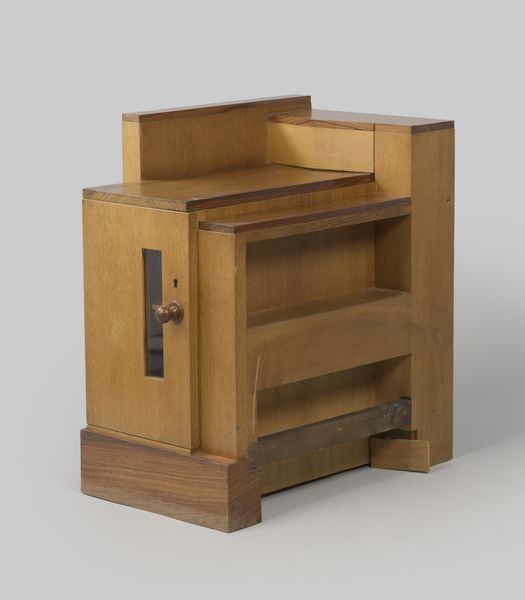
Schot van betimmering uit huis Dentz van Schaick c. 1900 - 1905
0:00
0:00
wood
#
art-nouveau
#
sculpture
#
wood
#
decorative-art
#
watercolor
Dimensions: height 96.5 cm, width 33.0 cm, thickness 2.0 cm
Copyright: Rijks Museum: Open Domain
Editor: Here we have a piece called "Schot van betimmering uit huis Dentz van Schaick" by Carel Adolph Lion Cachet, dating around 1900-1905. It appears to be made of wood and looks like decorative paneling. I'm immediately drawn to the craftsmanship and how the darker wood contrasts with the lighter inlays. How do you read this work? Curator: As a materialist, I find it crucial to investigate the labor involved in producing these wooden panels. Consider the tools and techniques necessary for carving and inlaying. This isn’t simply decorative; it’s a statement about skilled labor at the turn of the century, contrasting factory production and the Arts and Crafts movement. What can we deduce about the social status of those who made it versus those for whom it was made? Editor: That's a really interesting way to look at it. I hadn't considered the social implications embedded in the craft itself. Does the Art Nouveau style play into this dynamic at all? Curator: Absolutely. Art Nouveau, while often associated with luxury, was also a reaction against industrialization. Here, the wood itself becomes a signifier, distancing itself from mass-produced materials like steel or cheaper composites. Who had access to the materials? Was it locally sourced, influencing its cost? Consider the choices in production beyond just aesthetics. Editor: So you're saying that understanding the context in which it was created – the means of production, the available materials, the labor involved – gives us a much deeper understanding of its significance than simply admiring the design? Curator: Precisely. And think about consumption. Who was this paneling for? What kind of life was lived amidst it, and what was the effect of displaying status via production choices, like choosing to pay a high premium for natural over mass-manufactured design choices. Editor: That gives me a completely new perspective on this. It is no longer just a beautiful object, but a tangible record of a specific time, place, and set of socio-economic relationships. Curator: Indeed, by analyzing material culture, we reveal underlying power dynamics shaping both art and society.
Comments
No comments
Be the first to comment and join the conversation on the ultimate creative platform.
